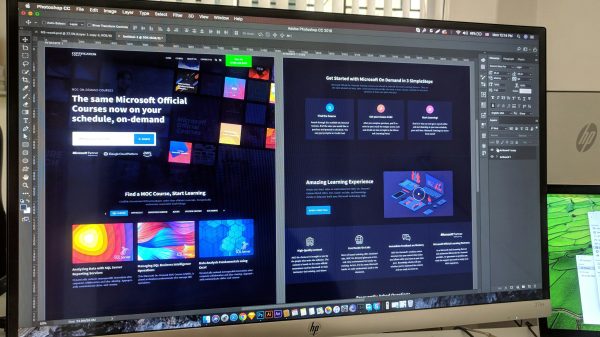Canada is renowned for its stunning landscapes, multicultural communities, and, of course, maple syrup. But business leaders and HR managers may be surprised to learn that Canada is also carving out a unique space in the world of HR technology. While HR software exists worldwide, there’s something distinctively “Canadian” about how it’s evolving in the Great White North, blending progressive workplace values with robust digital tools.
TL;DR (Too long, didn’t read)
HR software in Canada stands out thanks to its strong alignment with national values like diversity, inclusion, bilingualism, and employee well-being. Canadian companies face unique labor laws and cultural nuances that shape how workplace technology works. Beyond compliance, HR systems here focus on creating inclusive, people-first work environments. It’s not just about tracking hours—it’s about measuring what matters most to people.
Understanding What Makes Canadian HR Software Unique
To grasp why HR software in Canada hits differently, it’s essential to understand the context of Canadian work culture and compliance requirements. The blend of policies, social attitudes, and regional languages influences not just what HR software needs to do, but how it does it.
1. A Bilingual and Multicultural Workforce
One of the most apparent distinctions is the requirement for HR platforms to operate seamlessly in both English and French. Quebec’s Charter of the French Language mandates businesses to operate primarily in French, making localization a non-negotiable feature of any HR tool used across the country. HR solutions tailored for Canada include full bilingual support—not just in language UI but also in documentation, onboarding processes, and legal notices.
Moreover, Canada’s commitment to multiculturalism means HR platforms also need to consider diverse holidays, celebrations, and social norms. Representation can’t be an afterthought—it must be built into dashboards, DEI (Diversity, Equity, and Inclusion) analytics, and employee engagement modules.

2. Provincial Labor Laws: One Country, Many Rules
Unlike some countries with a centralized labor law system, Canada’s provinces and territories each maintain their own regulatory environments. For instance, statutory holidays, minimum wage rates, and rules about overtime can differ significantly between British Columbia and Nova Scotia. This scattered legal terrain demands HR software to be nimble and context-aware.
- Payroll calculations need to be location-specific.
- Leave entitlements must reflect the employee’s home province.
- Employment contracts often vary across jurisdictions.
As a result, Canadian HR tech companies incorporate real-time legislative updates into their systems, allowing HR professionals to breathe a little easier while staying compliant from coast to coast.
3. Focus on Empathy and Mental Wellness
Canada’s focus on mental health and employee well-being transcends workplace trends—it’s become a cultural cornerstone. Canadian HR software reflects this by offering features that go beyond the basic clock-in/clock-out mechanics. Think mood-tracking integrations, wellness check-ins, and mental health resource hubs built directly into employee portals.
These features enable HR professionals to keep their fingers on the pulse of employee morale, helping organizations identify burnout risks before they escalate into real problems. In short, Canadian HR tools combine metrics with mindfulness.
“The Canadian way emphasizes care and compassion alongside compliance and KPIs. That’s not just good HR—it’s good business.”
From Raw Data to Meaningful Metrics
HR software is becoming more analytical and data-driven globally, but Canadian platforms have a slightly different approach: turn data into insights that align with people-first cultures.
Measuring More Than Just Productivity
Beyond routine HR reports, Canadian systems often include tools that measure:
- Belonging Indexes – Gauging how included employees feel at work.
- Engagement Scores – Using anonymous surveys to track meaningful feedback.
- Diversity Dashboards – Representing employee demographics across departments.
HR software made in or for Canada doesn’t just output KPIs—it helps managers build more humane workplaces by keeping tabs on what really matters to employees.
Privacy and Data Sovereignty
Canadian organizations are particularly cautious about storing employee data—especially when using cloud-based HR solutions. Provinces like British Columbia and Nova Scotia have laws preventing public sector data from being stored outside of the country. Accordingly, many Canadian HR tech providers ensure local hosting, encrypted storage, and clear data-handling practices.

This is where “Made in Canada” HR software shines. By prioritizing Canadian data sovereignty and compliance with the Personal Information Protection and Electronic Documents Act (PIPEDA), these platforms reduce security risks and foster trust with employees concerned about where—and how—their information is stored.
Localization with a Human Touch
Another distinguishing factor is how Canadian HR software integrates cultural context into design elements and workflows.
Customizable Leave and Holiday Tracking
In a country with more recognized cultural and religious holidays than the average global workplace calendar can handle, flexibility is key. Canadian HR tools allow for:
- Indigenous People’s Day leave
- Flexible time-off types catering to cultural obligations
- Decentralized scheduling across time zones and provinces
This ensures that companies are not just compliant, but also inclusive and adaptable.
Employee Onboarding and Offboarding with Canadian Flair
From welcome kits embedded in the software interface to retirement planning built around the Canadian Pension Plan (CPP), every part of the employee lifecycle finds digital comfort in localized solutions that understand national priorities.
Why Canadian Companies Prefer Homegrown HR Solutions
Although global platforms like Workday and SAP SuccessFactors have a presence in Canada, many organizations prefer homegrown options like Ceridian Dayforce, Rise People, Collage HR, or Humi. The reasons? Deep localization, quicker customer support, and a more intuitive understanding of Canadian values and labor intricacies.
For example, Canadian HR vendors are more likely to support:
- Bilingual documentation templates
- Payroll integrations with Canadian banks and CRA (Canada Revenue Agency)
- Role-based diversity reporting tools aimed at ESG and CSR initiatives
Canadian companies know that using software aligned with their needs isn’t just useful—it’s critical for efficient, equitable HR operations.
Final Thoughts: Maple Syrup Meets Machine Learning
HR software in Canada is more than just functional—it reflects the nation’s character. With values rooted in inclusion, respect, and adaptability, these platforms offer more than metrics. They offer meaning.
From bilingual interfaces to data hosted on Canadian soil, HR software here enables organizations to stay compliant without compromising compassion. And as Gen Z enters the workforce demanding transparency, flexibility, and wellness, the personalized touch of Canadian HR platforms will only become more valuable.
So yes, HR tech in Canada does hit a little differently. And frankly, we think that’s pretty sweet—maple syrup aside.


































